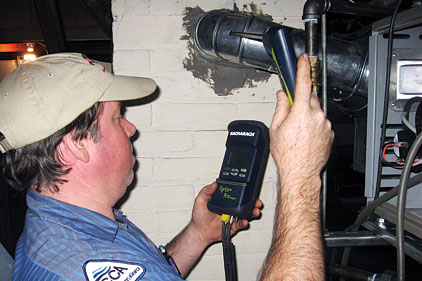Elvita Jones of Jones-Rogers outlines several checks that technicians should perform on a furnace, including:
• A carbon monoxide test (one that includes a printout showing the results of the furnace’s performance, and has been done with certified equipment meeting manufacturer and industry standards).
• Check the operation of the safety controls.
• Check heating system operation for safety.
• Inspect the wiring system.
• Check ignition control.
• Check flue for proper draft.
• Check heat exchanger for safety.
• Check for combustible materials near the furnace.
• Check blower motor for debris and oxidation.
• Test for combustion leaks.
• Adjust burners for efficiency.
• Inspect flue and draft diverter.
• Inspect air filters.
• Check blower for cleanliness.
• Test for gas leaks in furnace.
• Test and adjust gas pressure regulator.
Performing thorough and consistent maintenance, including tasks such as these, can prevent CO casualties, notes Jones-Rogers.
In addition, the Consumer Product Safety Commission recommends putting CO detecting alarms outside the bedrooms in each separate sleeping area.
Because carbon monoxide is colorless and odorless, it helps to know the symptoms of poisoning which include: headache, dizziness, fatigue, nausea, vomiting, blurred vision, stinging eyes and fainting. If anyone shows signs of these symptoms, or if a leak is suspected, residents should leave right away and call 911.
Jones-Rogers Inc. is an independent, family owned and operated, HVAC contractor serving northern Virginia since 1970. For more information, visit www.jones-rogers.com.
Publication date: 10/8/2012


Report Abusive Comment